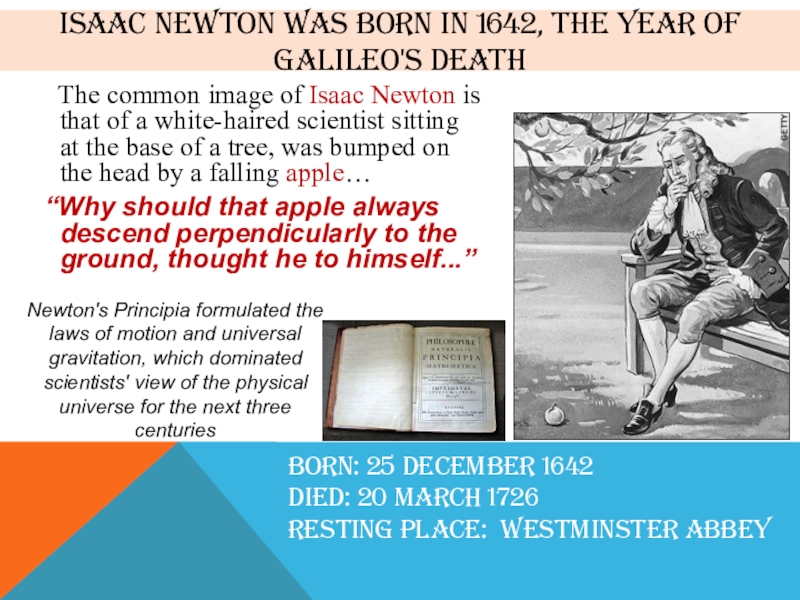- Главная
- Разное
- Образование
- Спорт
- Естествознание
- Природоведение
- Религиоведение
- Французский язык
- Черчение
- Английский язык
- Астрономия
- Алгебра
- Биология
- География
- Геометрия
- Детские презентации
- Информатика
- История
- Литература
- Математика
- Музыка
- МХК
- Немецкий язык
- ОБЖ
- Обществознание
- Окружающий мир
- Педагогика
- Русский язык
- Технология
- Физика
- Философия
- Химия
- Шаблоны, фоны, картинки для презентаций
- Экология
- Экономика
Презентация, доклад интегрированного урока по математике и страноведению на английском языке .
Содержание
- 1. Презентация интегрированного урока по математике и страноведению на английском языке .
- 2. “Be Inspired, Achieve and overcome!”The famous events
- 3. Who deserved credit for the first (prior)
- 4. has the sequence of dramatic historical events
- 5. Year 11 The conference set to find the answers Sophia Krivosheeva, year 11
- 6. The common image of
- 7. This was the worst outbreak of plague
- 8. The Great Fire of London started on
- 9. Expert’s point of view on Great Fire,
- 10. Expert’s point of view Newton versus LeibnizIt
- 11. Gottfried Wilhelm von LeibnizLeibniz discovered “his” calculus
- 12. Newton published his findings only in
- 13. Royal Society verdictIn 1715, just a year
- 14. At the end of conference students were
Слайд 1Lesson – Conference
The Calculus Controversy
Dedicated for students year 11
Creators:
Mikhailichenko Yelena ,
Svetlana Tsoy, English Teacher
Слайд 2“Be Inspired, Achieve and overcome!”
The famous events in English history were
Слайд 3Who deserved credit for the first (prior) invention of the differential
Sir Isaac Newton
Gottfried Wilhelm Leibniz
Most known founders of calculus
Слайд 4has the sequence of dramatic historical events its impact on mathematicians’
Lord Have Mercy
Black Plague in 1665
Great London Fire 1666
Слайд 6 The common image of Isaac Newton is that
“Why should that apple always descend perpendicularly to the ground, thought he to himself...”
Isaac Newton was born in 1642, the year of Galileo's death
Newton's Principia formulated the laws of motion and universal gravitation, which dominated scientists' view of the physical universe for the next three centuries
Born: 25 December 1642
Died: 20 March 1726
Resting place: Westminster Abbey
Слайд 7This was the worst outbreak of plague in England
London lost
Rats carried the fleas that caused the plague. They were attracted by city streets filled with rubbish and waste, especially in the poorest areas.
Newton later recalled: 'All this was in the two plague years of 1665 and 1666, for in those days I was in my prime of age for invention, and minded mathematics and philosophy more than at any time since.'
Cambridge was closed for the next two years, Newton returned to Woolsthorpe. There, in the following 18 months, he created Calculus. However, he did not publish it. This was an enormous mistake.
Слайд 8The Great Fire of London started on
The Great Fire of London swept through the city, devastating many buildings including 13,200 houses, 87 parish churches, The Royal Exchange and Guildhall. St. Paul’s Cathedral, built during the middle ages.
It started in the baker, Thomas Faynor’s shop and spread rapidly, helped by a strong wind from the East.
The new city was planned by Christopher Wren and rebuilt using stone over the following 30 years
Firefighting at the time was very basic and there was little skill or knowledge involved. They used leather buckets, axes and water squirts which had little effect on the fire.
Слайд 9Expert’s point of view on Great Fire, London
“There were some benefits
One of these was that the black plague which had killed many people was eliminated by the burning down of diseased, rat-infected properties…
In fact, it stopped the black death”
Svetlana Tsoy, English teacher
Слайд 10Expert’s point of view Newton versus Leibniz
It appears that Newton not
Leibniz and Newton had very different views of calculus in that Newton’s was based on limits and concrete reality, while Leibniz focused more on the infinite and the abstract.
Слайд 11Gottfried Wilhelm von Leibniz
Leibniz discovered “his” calculus in Paris between 1673
Newton first described his methods, formulas and concepts of calculus, including his binomial theorem, fluxions and tangents, in letters he wrote to Leibniz.
However an examination of Leibniz' unpublished manuscripts provided evidence that despite his correspondence with Newton, he had come to his own conclusions about calculus already.
In fact, the delayed publication of Newton’s findings caused the entire controversy.
Born: 1 July 1646, Leipzig, Germany
Died: 14 November 1716, Hanover, Germany
Leibniz published the first account of differential calculus in 1684 and then published the explanation of integral calculus in 1686
Слайд 12
Newton published his findings only in 1687, but…
Evidence shows that
Matter of “national pride”, England refused to teach anything but Newton’s discoveries of geometrical and fluxional methods for over a century…
Evidence also shows that Newton was the first to establish the general method called the "theory of fluxions" was the first to state the fundamental theorem of calculus and was also the first to explore applications of both integration and differentiation in a single work.
Isaak Barrow
1630-1677
Слайд 13Royal Society verdict
In 1715, just a year before Leibniz death, the
It was also stated that Leibniz was guilty of plagiarism.
It later became known that these accusations were false, and both men were then given credit, but not until after Leibniz had already died.
No matter who actually discovered calculus first, both Newton and Leibniz made great contributions to the advancement of mathematical processes, and both deserve credit for that
Слайд 14At the end of conference students were asked to complete a
18 students achieved A+
(outstanding)
2 students achieved A
(good)
Students’ outcome regarding lesson:
“Innovative, Inspirational, Incredible…”



















